
James Benjamin Blish was an American science fiction and fantasy writer. He is best known for his Cities in Flight novels and his series of Star Trek novelizations written with his wife, J. A. Lawrence. His novel A Case of Conscience won the Hugo Award. He is credited with creating the term "gas giant" to refer to large planetary bodies.

Laurence van Cott Niven is an American science fiction writer. His 1970 novel Ringworld won the Hugo, Locus, Ditmar, and Nebula awards. With Jerry Pournelle he wrote The Mote in God's Eye (1974) and Lucifer's Hammer (1977). The Science Fiction and Fantasy Writers of America gave him the 2015 Damon Knight Memorial Grand Master Award.

Damon Francis Knight was an American science fiction author, editor, and critic. He is the author of "To Serve Man", a 1950 short story adapted for The Twilight Zone. He was married to fellow writer Kate Wilhelm.

Orphans of the Sky is a science fiction novel by American writer Robert A. Heinlein, consisting of two parts: "Universe" and its sequel, "Common Sense". The two novellas were first published together in book form in 1963. "Universe" was also published separately in 1951 as a 10¢ Dell paperback. The work presents one of the earliest fictional depictions of a generation ship.
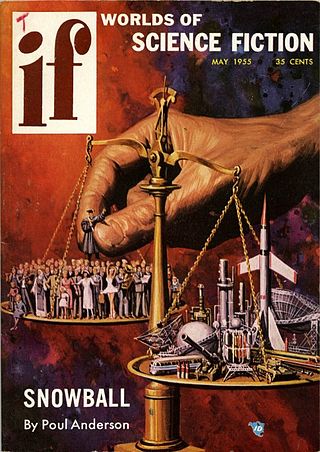
If was an American science fiction magazine launched in March 1952 by Quinn Publications, owned by James L. Quinn.
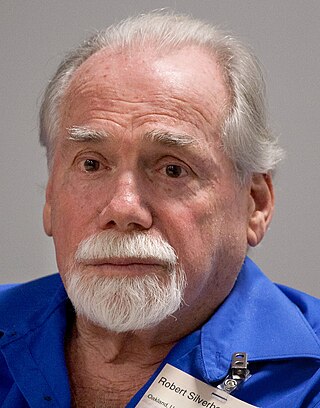
Robert Silverberg is an American author and editor, best known for writing science fiction. He is a multiple winner of both Hugo and Nebula Awards, a member of the Science Fiction and Fantasy Hall of Fame, and a Grand Master of SF. He has attended every Hugo Award ceremony since the inaugural event in 1953.
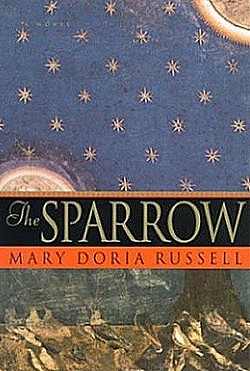
The Sparrow (1996) is the first novel by author Mary Doria Russell. It won the Arthur C. Clarke Award, James Tiptree Jr. Award, Kurd-Laßwitz-Preis and the British Science Fiction Association Award. It was followed by a sequel, Children of God, in 1998. The title refers to Gospel of Matthew 10:29–31, which relates that not even a sparrow falls to the earth without God's knowledge thereof.
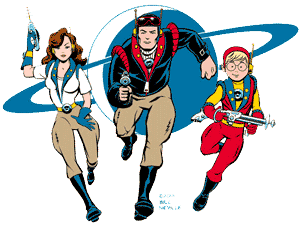
The 62nd World Science Fiction Convention (Worldcon), also known as Noreascon 4, was held on 2–6 September 2004 at the Hynes Convention Center, Sheraton Boston Hotel and Boston Marriott Copley Place in Boston, Massachusetts, United States.
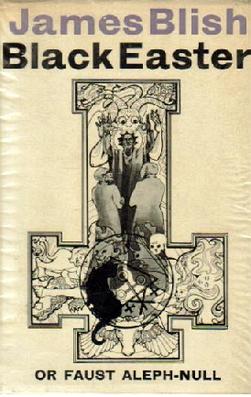
Black Easter is a fantasy novel by American writer James Blish, in which an arms dealer hires a black magician to unleash all the demons of Hell on Earth for a single day. The novel initially depicts the assassination of a Governor of California by a black magician working as a contract killer. The same magician is then hired to release every demon in Hell for a brief time period. However, the demons cannot actually be returned to Hell by the end of the novel. Their traditional opponent, God, has already died and nobody else can compel them to return to Hell.
"The Star" is a science fiction short story by English writer Arthur C. Clarke. It appeared in the science fiction magazine Infinity Science Fiction in 1955 and won the Hugo Award in 1956. It is collected in Clarke's 1958 book of short stories The Other Side of the Sky, and it was reprinted in the January 1965 issue of Short Story International as the lead-off story.

Cities in Flight is a four-volume series of science fiction novels and short stories by American writer James Blish, originally published between 1950 and 1962, which were first known collectively as the "Okie" novels. The series features entire cities that are able to fly through space using an anti-gravity device, the spindizzy. The stories cover roughly two thousand years, from the very near future to the end of the universe. One story, "Earthman, Come Home", won a Retro Hugo Award in 2004 for Best Novelette. Since 1970, the primary edition has been the omnibus volume first published in paperback by Avon Books. Over the years James Blish made many changes to these stories in response to points raised in letters from readers.

The Body Snatchers is a science fiction novel by American writer Jack Finney, originally serialized in Collier's magazine in November–December 1954 and published in book form the following year.
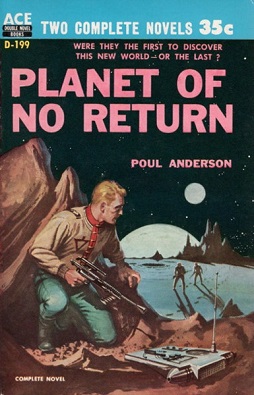
Question and Answer is a science fiction novel by American writer Poul Anderson. It originally appeared in the June and July 1954 issues of magazine Astounding Science Fiction, and was later reprinted in 1956 as part of Ace Double D-199 under the title Planet of No Return, and again as a stand-alone Ace novel in February 1978 under the original title.

The Quincunx of Time is a short science fiction novel by American writer James Blish. It is an extended version of a short story entitled "Beep", published by Galaxy Science Fiction magazine in 1954. The novel form was first published in 1973.
The 12th World Science Fiction Convention (Worldcon), also known as SFCon, was held on 3–6 September 1954 at the Sir Francis Drake Hotel in San Francisco, California, United States.

Empire of the Atom is a science fiction novel by Canadian-American writer A. E. van Vogt. It was first published in 1957 by Shasta Publishers in an edition of 2,000 copies. The novel is a fix-up of the first five of van Vogt's Gods stories, which originally appeared in the magazine Astounding. The remaining Gods stories are combined in the sequel The Wizard of Linn. A genealogical chart of the ruling family of the Empire of Linn is included.

One in Three Hundred is a science fiction novel by British writer J. T. McIntosh. It was originally published as three novellas in The Magazine of Fantasy and Science Fiction in 1953-54, and was then published by Doubleday & Company, Inc. During 1956 the novel was reissued by Ace as Ace Double D-113, in a dos-à-dos binding with Dwight V. Swain's The Transposed Man.

In Search of Wonder: Essays on Modern Science Fiction is a collection of critical essays by American writer Damon Knight. Most of the material in the original version of the book was originally published between 1952 and 1955 in various science fiction magazines including Infinity Science Fiction, Original SF Stories, and Future SF. The essays were highly influential, and contributed to Knight's stature as the foremost critic of science fiction of his generation. The book also constitutes an informal record of the "Boom Years" of science fiction from 1950 to 1955.

Witches Three is an anthology of three original fantasy stories, edited by the uncredited Fletcher Pratt and published in hardcover by Twayne in 1952. No further editions of the anthology were issued, but each of the stories was later republished.
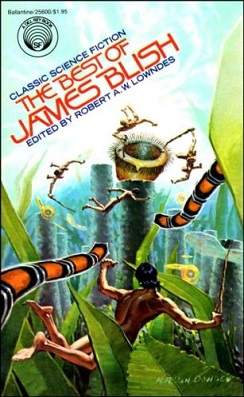
The Best of James Blish is a collection of science fiction short stories by American author James Blish, edited by Robert A. W. Lowndes. It was first published in paperback by Del Rey/Ballantine in August 1979 as a volume in its Classic Library of Science Fiction.

















